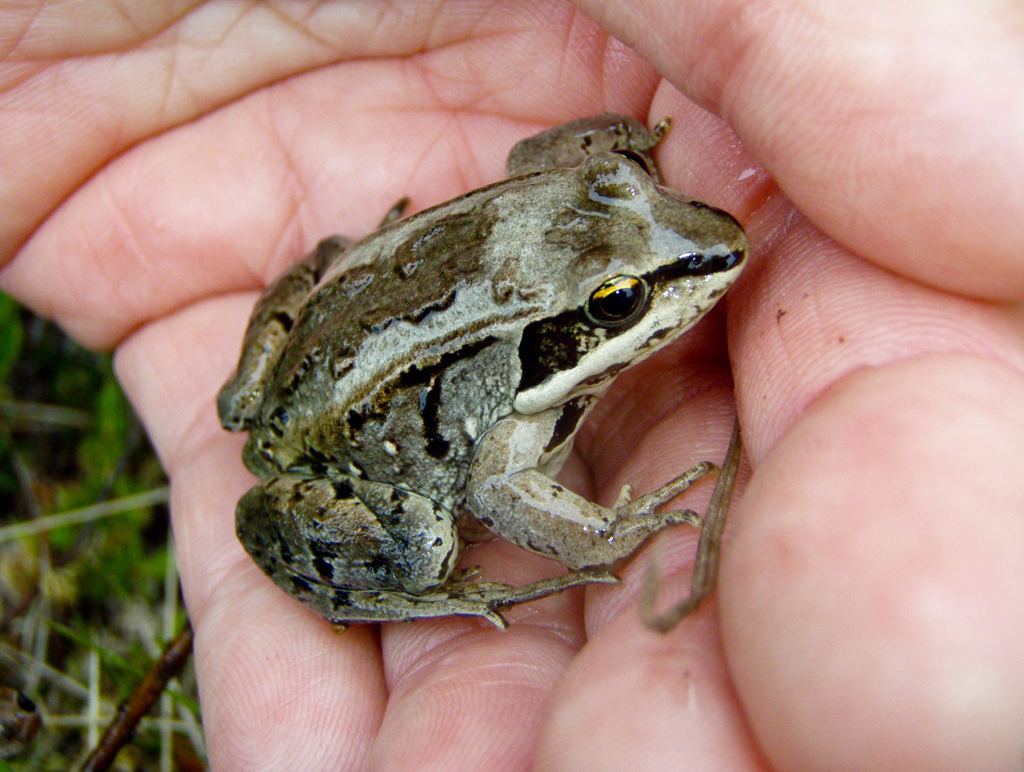
Wood frog at Nanuk. Back from oblivion!
By Andy MacPherson, Head Wilderness Guide, Churchill Wild
We’ve been lucky to see numerous wolves and polar bears at Nanuk this season but we shouldn’t ignore some of the smaller wonders that can be seen with a closer look at the ground.
We have to be careful when we walk because you never know when a wood frog might be living its short life underneath us. These amazing little amphibians will live from four to five years in the north, and if you can believe it, they freeze almost solid every year!
The wood frog’s liver produces a large amount of glucose as winter approaches. This is transported by the blood and enters the animal’s cells, where it acts as an antifreeze. The high glucose concentration in the cells — which may be a hundred times higher than normal during the winter — prevents the frog’s vital organs from freezing as the temperature drops, even though their heart stops beating and their lungs stop working.
Although researchers partially understand the processes that occur in a wood frog’s body as it freezes, the signals that stop the heart from beating and the lungs from working are still mysterious. Some aspects of the thawing process are still puzzling as well.
It takes about a day for the wood frog to both thaw and return to normal activity. The thawing process starts from the inside of the animal’s body and moves outwards, causing the frog to gradually come out of suspended animation. The signals that stimulate the heart to start beating again and the lungs to start working are unknown.
It’s always fun when we find wood frogs on our daily excursions, knowing the interesting process they have been through before they come back to join us each summer!








